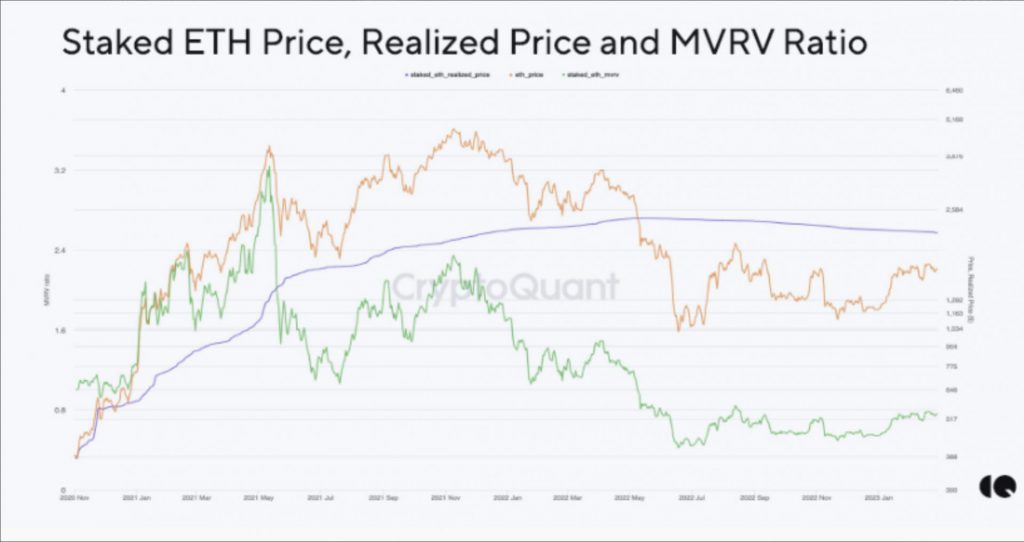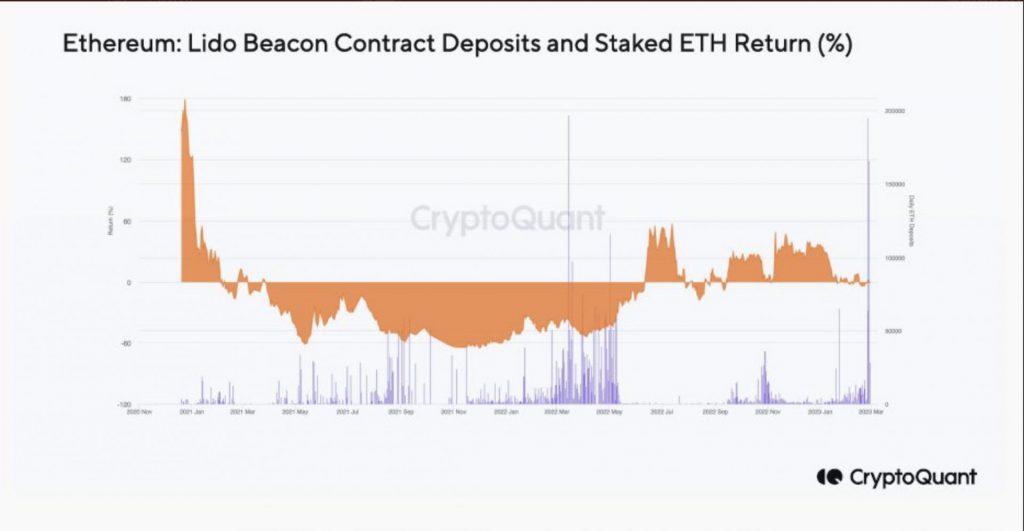Ethereum (ETH) is moving towards another pivotal upgrade next month. The update, dubbed Shanghai, will allow the unlocking of staked Ether for the first time. Investors and users are on edge regarding how the upgrade will affect the price of ETH, with many expecting a sell-off.
CryptoQuant, however, has given some reasons why there might not be an increase in the selling pressure of ETH with the commencement of the upcoming Shanghai upgrade. As per the analysis firm, 60% of all staked Ethereum is at a loss. The number represents almost 10.3 million ETH.
The firm indicated that selling pressure increases when there is “extreme profit.” However, that is not the case with ETH stakers at the moment. It is unlikely that investors will sell their Ether at a loss. Instead, there is a possibility that stakers will continue to stake their ETH and earn rewards until at least a majority break even on their holdings.


Additionally, the majority of staking pools’ average depositors are currently losing money as well. Almost 30% of all Ethereum (ETH) is staked in Lido, the largest staking pool. CryptoQuant says that Lido holds its ETH at an average loss of $1000. Moreover, the average loss for the ETH staked on Lido is 24%.


Furthermore, the analysis firm noted that the most profitable Ethereum was staked less than a year ago. There have not been any notable profit-taking moments in the time since. At the moment, all these factors infer that the Shanghai upgrade could be uneventful for ETH’s price.
Sell-off predictions after Ethereum’s Shanghai upgrade
Ethereum uses a “dynamic withdrawal queue,” which is based on the demand to unstake at any given time, as opposed to other PoS networks that have a fixed unstaking period, according to Blockworks Research analyst Dan Smith. The departure queue contains restrictions to prevent the entire validator set from leaving the network at once.
Rich Falk-Wallace, CEO of research firm Arcana, believes that if the maximum outflow of validators occurs, it will take more than two years for the number of validators to drop from the present 536,000 to 100,000. Wallace predicts that if his scenario materializes, selling pressure might be in the range of 6% of daily volume (0.2% of total ETH) for the first three days, 1% over the following six months, and 0.3% over an 18-month time frame.





